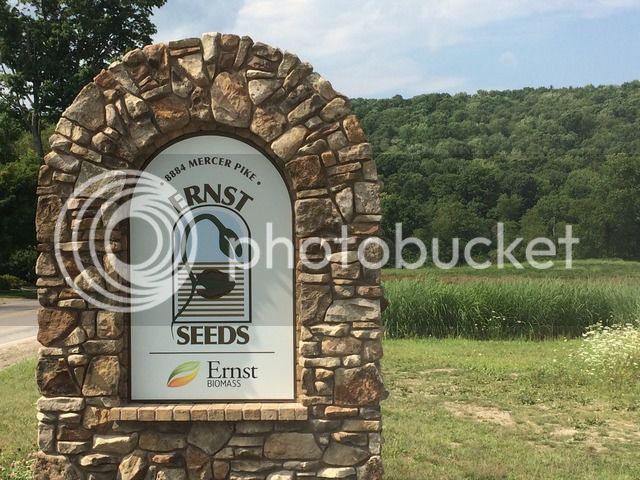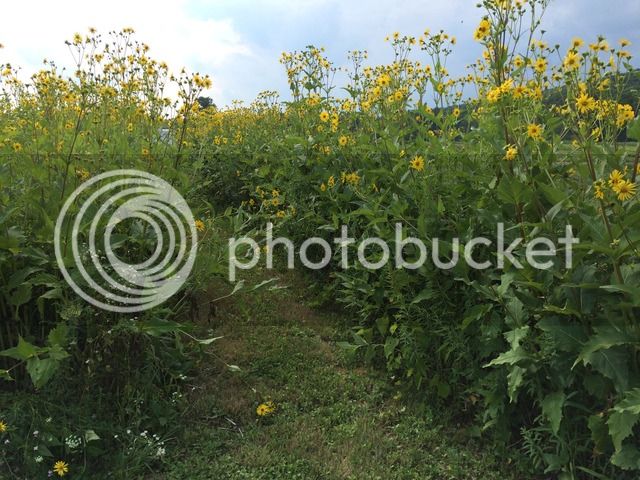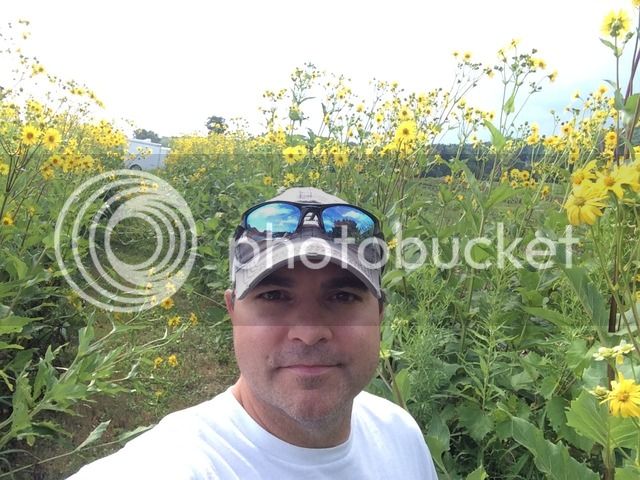Weasel
5 year old buck +

I stopped at Ernst Seed to get another bushel of winter rye and five pounds each of ladino & medium red clover. They always have different, interesting native stands growing around the parking lot. I saw these and was instantly intrigued.

I'm 6'1" and these were well over my head. The large leaves on the stalks were interesting too.

My immediate thought was they were an annual and wouldn't amount to much in the winter. I asked the girl in the office what they were and she said Cup Plant. To my surprise they are a perennial! And can grow to 11 feet!
From Ernst's catalog:
Cup Plant
Silphium perfoliatum
A robust, long-lived, flowering species with a thick stem; large leaves surround the stem. Blooms from July to September. Grows to 11' tall. May be used as forage for domestic animals with multiple cuts; best established by planting in the fall as a dormant seeding, with germination occurring in the spring; high potential as a bioenergy crop; provides food for birds and wildlife; attracts native pollinators.
http://www.ernstseed.com/seed-mix/species/?catalog-id=3676
Forage, screening, attracts pollinators, native & perennial. Very, very interesting. It is a bit expensive but I might have to give it a try.
